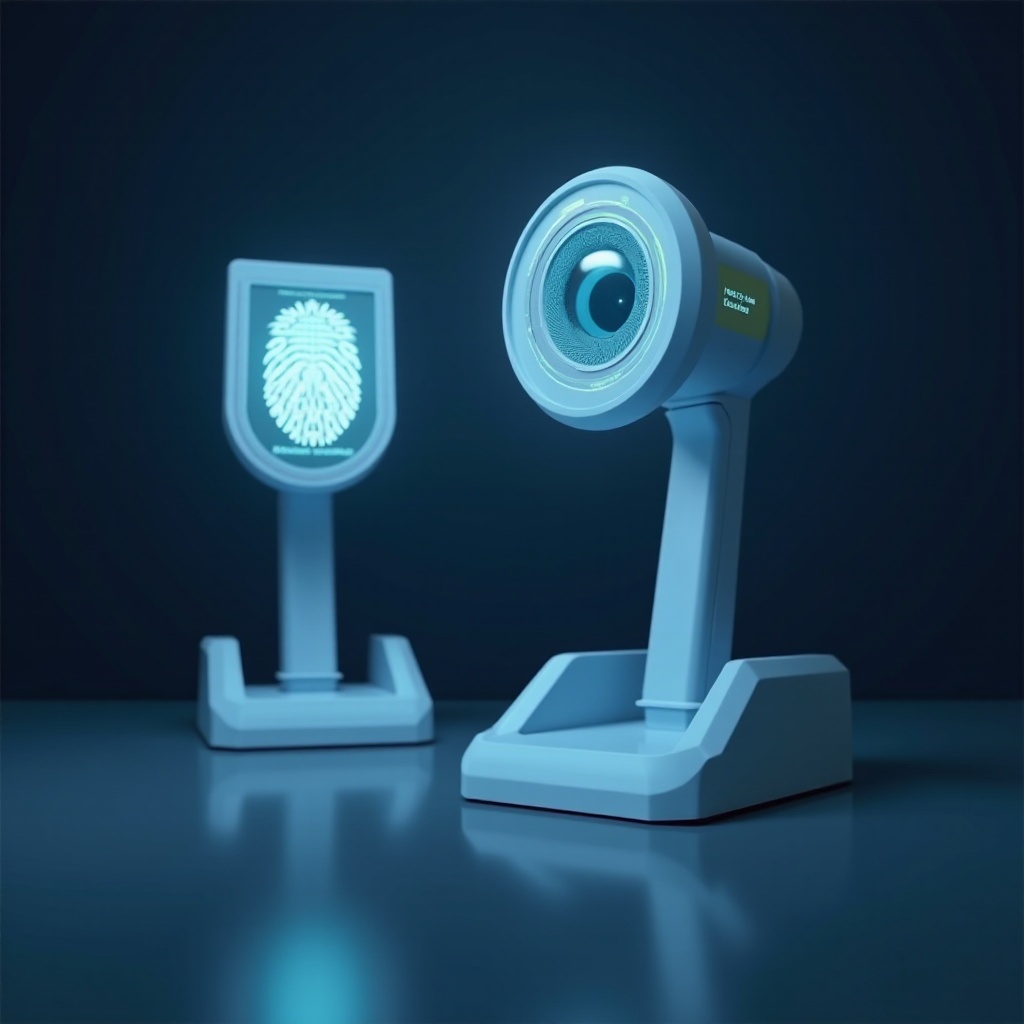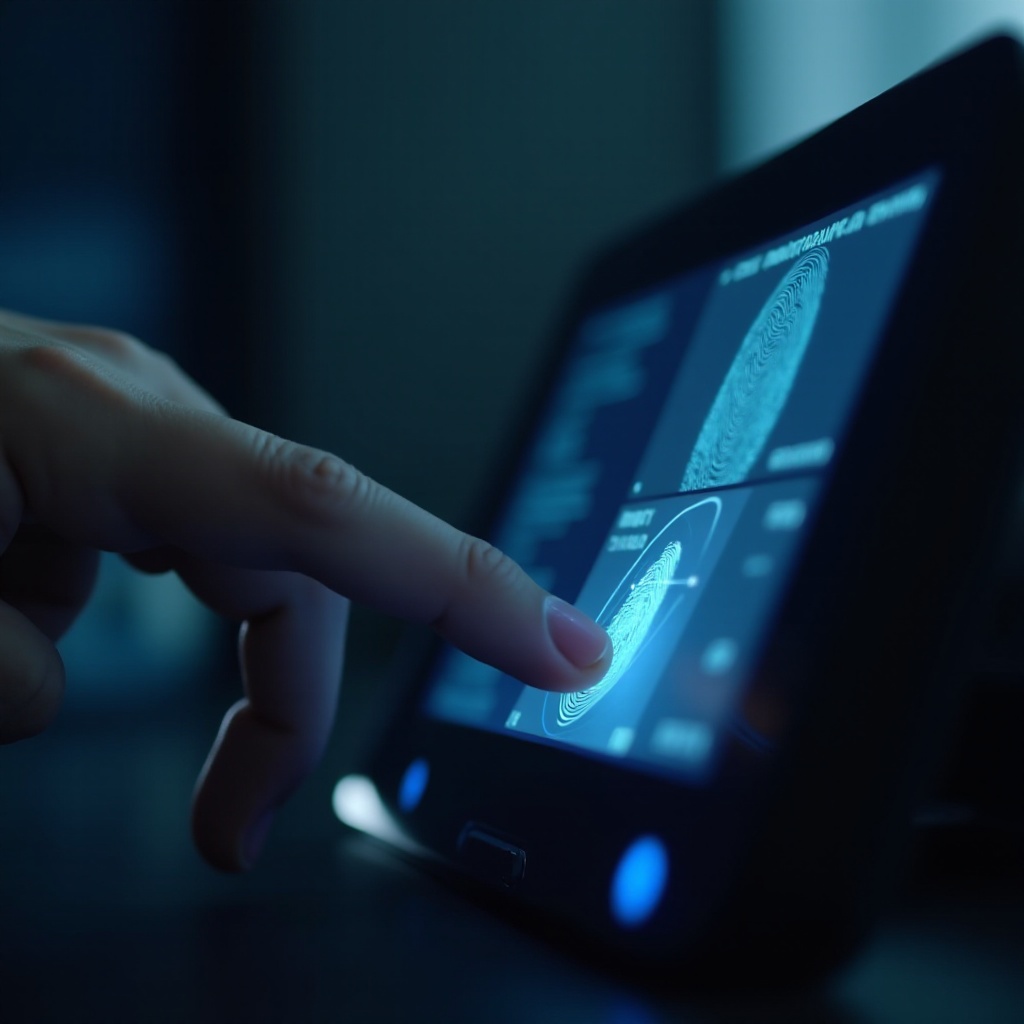Introduction
Fingerprint and iris scanners have revolutionized the way we approach identification. These biometric technologies offer high levels of security and accuracy, providing solutions in various sectors such as personal device security, law enforcement, and commercial use. They have become integral in ensuring that only authorized individuals gain access to secure information and areas. In this blog, we will explore how these scanning technologies work, their advantages, common applications, and the ethical considerations surrounding their use.

How Fingerprint Scanners Work
Fingerprint scanners operate based on the unique patterns found in human fingerprints. These patterns include loops, whorls, and arches, which vary distinctly from person to person. The scanning process involves several steps:
- Capture: The scanner captures an image of the fingerprint using optical, capacitive, or ultrasonic technology.
- Extraction: The scanner analyzes the captured image to identify specific features such as minutiae points, ridges, and bifurcations.
- Comparison: The extracted features are compared to a database of stored fingerprints to find a match.
Optical scanners use light to create a digital image, capacitive scanners detect electrical currents to form an image, and ultrasonic scanners use sound waves to capture the fingerprint’s texture. The most commonly used technology in modern devices is the capacitive scanner due to its accuracy and cost-effectiveness.

How Iris Scanners Work
Iris scanning technology captures the intricate patterns within the colored part of the eye, known as the iris. The process involves several detailed steps:
- Capture: A high-resolution camera takes an image of the eye, focusing primarily on the iris.
- Segmentation: The iris is isolated from other eye features (pupil, eyelid, eyelashes) using image processing techniques.
- Normalization: The segmented iris image is converted into a fixed dimension, making it easier to compare against stored templates.
- Feature Extraction and Matching: Unique features of the iris, such as crypts, furrows, and rings, are extracted. These features are then compared with a database of iris templates to find a match.
Iris scanners are known for their exceptional accuracy as the iris patterns are complex and unique to each individual, even between twins. They also remain stable over time, making them a reliable method for long-term identification.

Advantages of Fingerprint and Iris Scanning Technologies
Fingerprint and iris scanning technologies provide several benefits:
- High Accuracy and Security: Both fingerprint and iris scanning technologies offer high levels of precision in identification. The chances of false positives or negatives are minimal, ensuring unauthorized access is significantly reduced.
- Convenience: Biometric authentication is more convenient than remembering and typing in complex passwords. Users can quickly access their devices or secured areas with a simple scan.
- Speed: These technologies enable fast and efficient identification. Scans typically take less than a second, making them ideal for high-traffic environments.
- Non-intrusive: Iris scanning is a non-contact method, which enhances hygiene and reduces wear on the device. Fingerprint scanning, especially with capacitive and ultrasonic sensors, is also minimally intrusive.
- Integration Capabilities: Both technologies can be integrated into various systems and devices, from smartphones and laptops to access control systems and border control mechanisms.
- Cost-effective: While the initial setup might involve significant investment, the long-term benefits such as reduced fraud and enhanced security outweigh the costs.
Common Applications of Fingerprint and Iris Scanners
Fingerprint and iris scanners have found their place in various applications:
Personal Device Security
Fingerprint and iris scanners are commonly integrated into personal devices like smartphones, tablets, and laptops. They provide a secure and quick way to unlock devices and authenticate users for applications such as mobile banking and online shopping. The integration of these biometric features has dramatically increased the security of personal data and facilitated user-friendly experiences.
Law Enforcement and Border Control
In law enforcement, fingerprint and iris scanners play a crucial role in criminal identification. Police departments use Automated Fingerprint Identification Systems (AFIS) to quickly compare fingerprints found at crime scenes against criminal databases. Similarly, iris scanners are employed at borders and airports for secure and efficient immigration control. These technologies expedite the identification process, ensuring only authorized individuals can cross borders.
Commercial and Corporate Use
In the corporate world, fingerprint and iris scanners are used for access control and time attendance systems. They ensure that only authorized personnel can enter restricted areas and provide accurate records of employee attendance. Additionally, financial institutions use these scanners to enhance the security of transactions. Banks increasingly employ fingerprint and iris recognition for secure customer authentication, reducing fraud and ensuring secure access to financial services.
Ethical and Privacy Considerations
While fingerprint and iris scanners bring numerous benefits, they also raise ethical and privacy concerns. The collection, storage, and use of biometric data must be carefully regulated to protect individuals’ privacy rights. Data breaches involving biometric information can have severe consequences, as biometric data cannot be changed easily. It is essential to implement robust security measures to prevent unauthorized access to biometric databases. Transparency regarding how biometric data is used and stored, and obtaining explicit consent from individuals, are crucial steps in addressing these concerns.
Future Trends in Biometric Identification
The field of biometric identification is continually evolving. Future trends include the development of multimodal biometric systems that combine two or more biometric identifiers, such as fingerprints and facial recognition, to enhance security and accuracy. Advances in artificial intelligence and machine learning also promise to improve the efficiency of biometric systems, making them more adaptable and resilient to fraudulent activities. Moreover, there is a growing emphasis on ensuring that biometric systems are more inclusive and fair, reducing biases that might affect their accuracy.
Conclusion
Fingerprint and iris scanners are transformative technologies in modern identification systems. Their high accuracy, security, and convenience make them invaluable in various sectors, from personal device security to law enforcement and commercial use. However, it is essential to address ethical and privacy concerns to ensure these technologies are used responsibly. As biometric technology continues to advance, it promises an even more secure and efficient future for identification processes.
Frequently Asked Questions
How accurate are fingerprint and iris scanners?
Fingerprint and iris scanners are highly accurate, with iris scanners being slightly more reliable due to the complex and unique patterns of the iris. False positive and false negative rates are exceptionally low for both technologies.
Can fingerprint and iris data be hacked?
While biometric data stored in databases can be targeted by hackers, secure storage practices such as encryption can significantly reduce the risk. It is vital for organizations to implement robust cybersecurity measures to protect biometric information.
Are iris scanners more expensive than fingerprint scanners?
Generally, iris scanners tend to be more expensive than fingerprint scanners due to the advanced technology required to capture and process the detailed patterns in the iris. However, prices are expected to decrease as technology advances and becomes more widespread.

